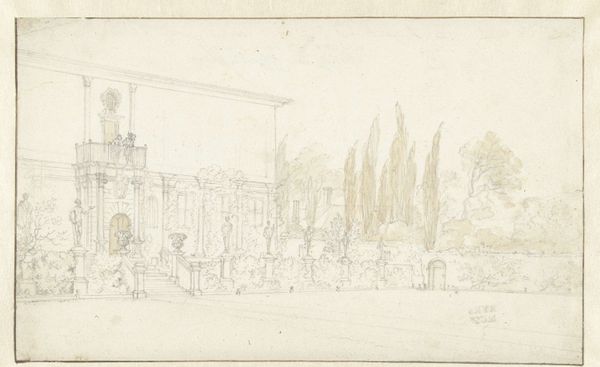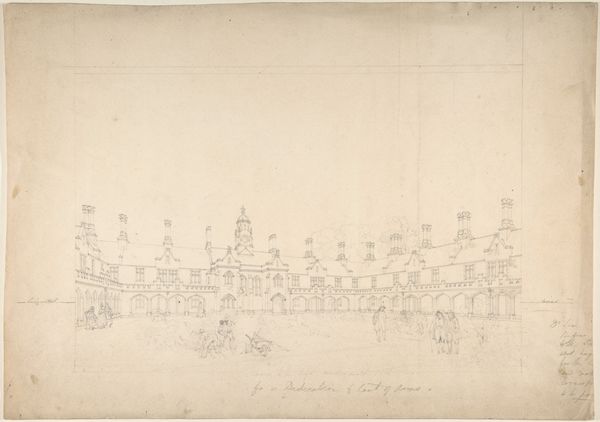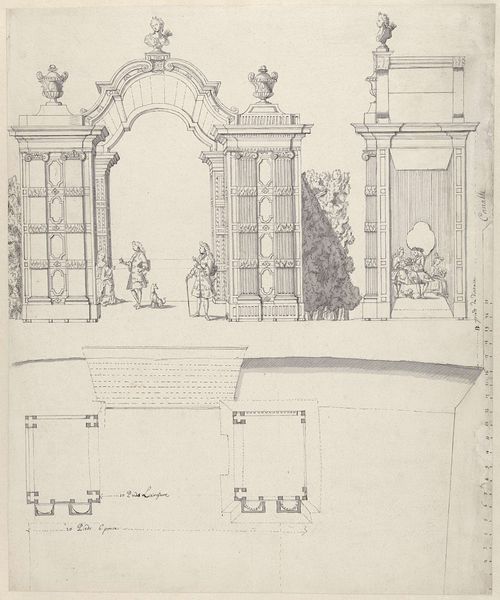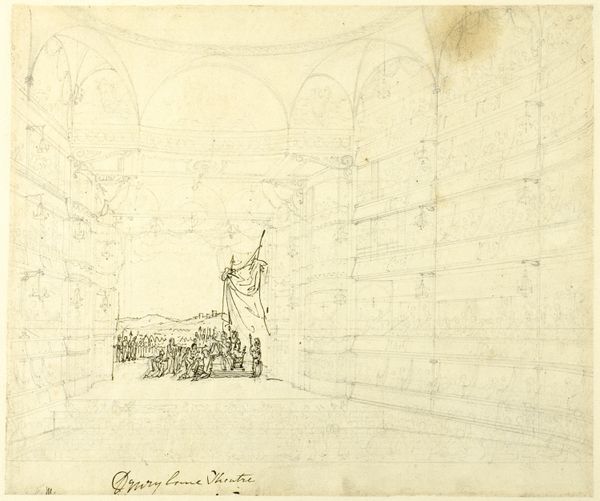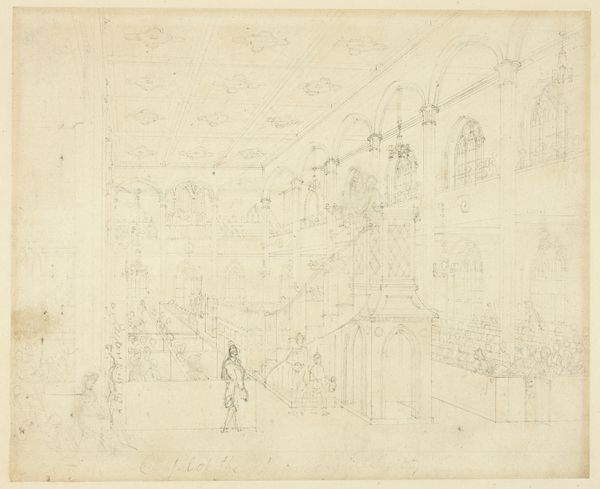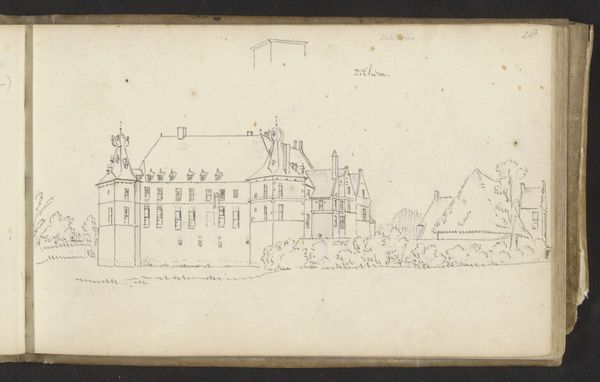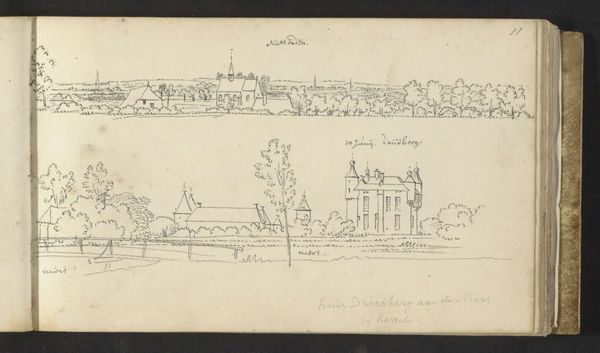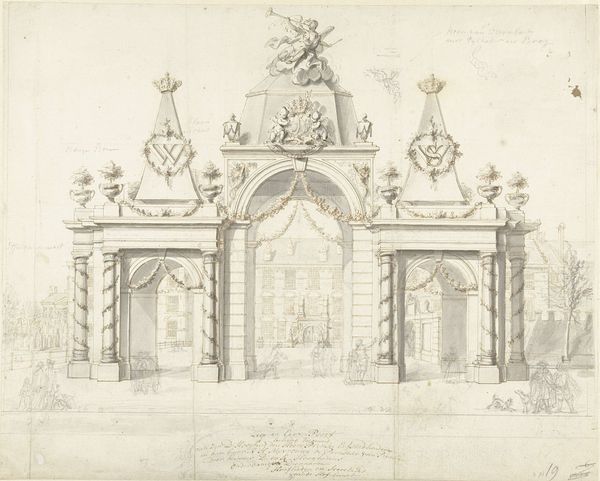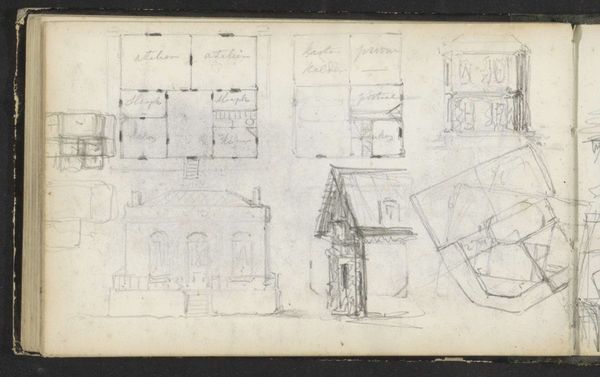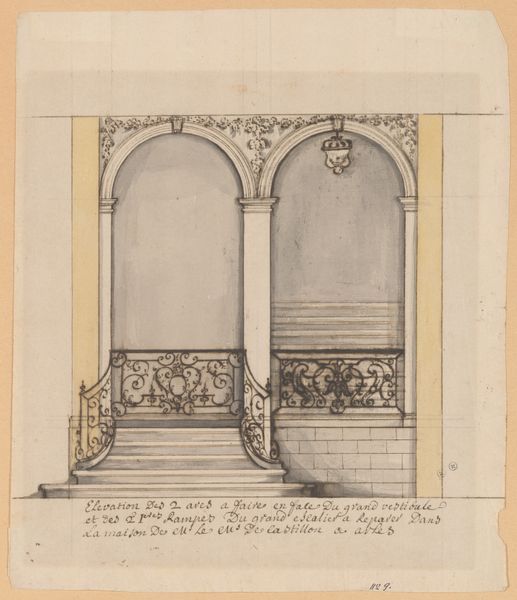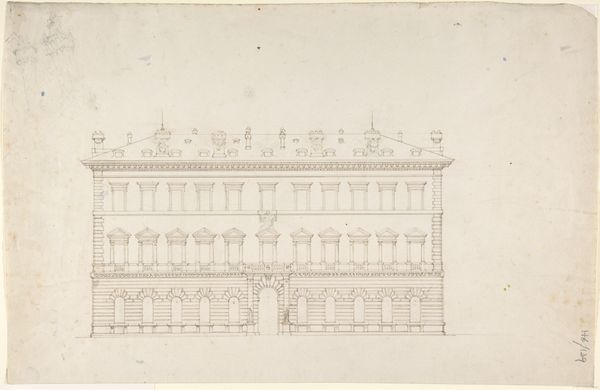
Gezicht op de tuin van het kasteel van Breda vanuit een galerij Possibly 1729
0:00
0:00
cornelispronk
Rijksmuseum
drawing, pencil
#
drawing
#
dutch-golden-age
#
landscape
#
perspective
#
form
#
pencil
#
line
#
cityscape
#
academic-art
Dimensions: height 155 mm, width 199 mm
Copyright: Rijks Museum: Open Domain
Curator: This is Cornelis Pronk's "View of the Garden of Breda Castle from a Gallery," possibly created in 1729. It's currently held at the Rijksmuseum. Editor: My first impression is one of delicacy, almost ethereal. The pencil work creates a sense of airy lightness, a subtle grandeur. It really captures the light falling across the garden. Curator: Precisely. The meticulous lines delineate form with exceptional clarity, emphasizing spatial relationships and depth of field. Look how the architectural elements of the gallery frame the vista, creating layers within layers. The arc of each division mirrors the next. It’s almost a fugue. Editor: And there's an interesting interplay between what is 'inside' versus what is outside. One can imagine the artist carefully rendered what could have been his everyday workspace in that gallery while making a study of the castle gardens that may only have been available to the elite. Did the making of this art itself involve navigating strict rules of social order? What did Pronk’s patron expect to get in exchange? Curator: It's difficult to ignore the socio-economic circumstances around this particular artwork. Certainly, one can observe the carefully delineated rendering to see perspective that directs the gaze, further reinforcing the power structures embedded in these views. Pronk demonstrates a command of established conventions, and uses line to orchestrate the viewer’s eye through the space. Editor: Yes, the emphasis on perspective reminds me of architectural renderings meant to impress. This almost seems to showcase control - the formal garden, precisely designed buildings in the background, it’s all a carefully controlled environment rendered via the application of a controlled and learned hand. I can see layers of consumption at work within it. The labor to design this art, construct buildings, to build the artist’s reputation – it all accumulates into that singular, subtle drawing. Curator: Perhaps the seemingly neutral perspective serves to mask an inherent ideological stance, promoting a certain vision of order and control that was relevant in its moment in the social order. One should consider, when regarding it from a current viewpoint, that it perpetuates specific perspectives while potentially omitting diverse experiences or realities present within that landscape and setting. Editor: Seeing Pronk use seemingly basic materials, paper and pencil, helps reveal hidden economies that were circulating during the Dutch Golden Age. Each choice reflects those very resources—materials, location, time invested by an individual. These inform its present status, and make looking closely quite exciting. Curator: The rigorous methodology in the artist’s hand renders it not just representation, but an ideal form, reflective of his aesthetic vision and of an idealization that was deemed aesthetically important by those for whom he made the piece. Editor: Reflecting upon its physical making really transforms the meaning that an image, such as Pronk's, can carry today. Thank you. Curator: Agreed; that dialectic helps to reveal unseen frameworks, helping unlock meaning to further one’s experience viewing it.
Comments
No comments
Be the first to comment and join the conversation on the ultimate creative platform.
